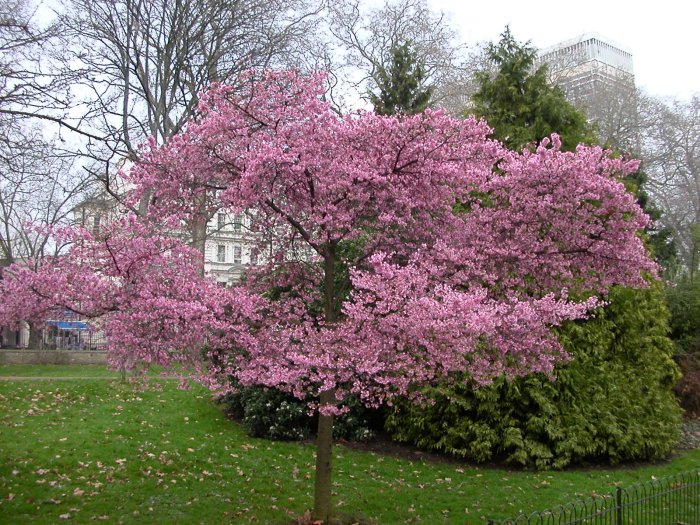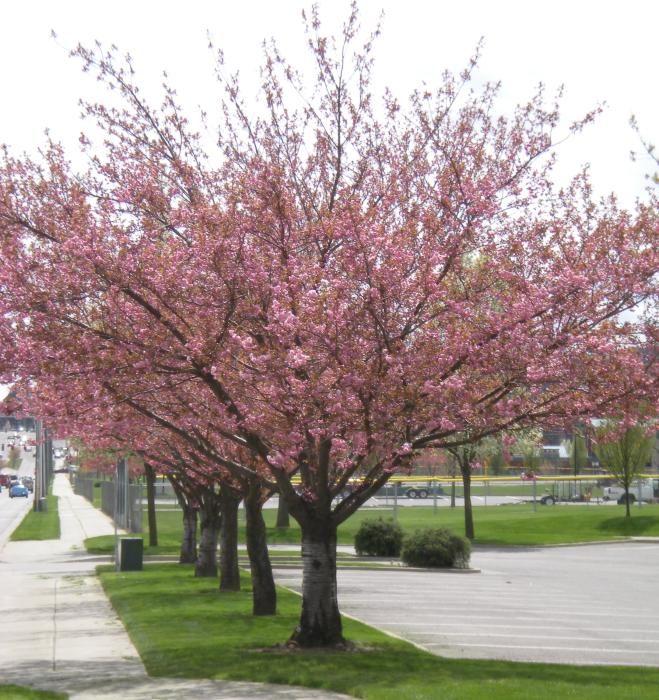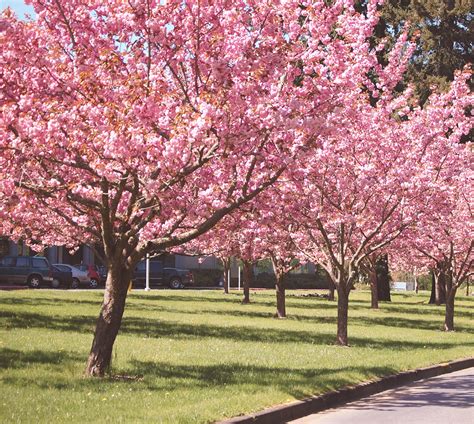While the briefness of their glory has to be acknowledged, cherries really are the hardy spring-flowering trees for temperate climate gardens. I can think of no others, apart from their close Prunus relatives and some of the magnolias that even come close to rivalling flowering cherries for sheer weight of bloom and vibrance of colour.
The genus Prunus, to which the cherries, plums, almonds, apricots and peaches belong, includes around 430 species spread over much of the northern temperate regions and has a toehold in South America. Although including a few evergreen species, such as the well-known cherry laurel (Prunus laurocerasus), the genus is mainly deciduous and generally hardy to the frosts likely to occur in most New Zealand gardens.
The genus Prunus is widely recognised as being divided into 5 or 6 subgenera, though some botanists prefer to recognise these as distinct genera. The subgenus cerasus is the one to which the cherries belong. This group includes a wide variety of species, many of which are not highly ornamental. The species which are of most interest to gardeners are the Chinese and Japanese cherries, not only because they tend to be the most attractive, but also because they tend to be reasonably compact, often have attractive autumn foliage as well as spring flowers and because centuries of development in oriental gardens have produced countless beautiful cultivars.
The Japanese recognise two main groups of flowering cherries: the mountain cherries or yamazakura and the temple or garden cherries, the satozakura. The mountain cherries, which tend to have simple flowers, are largely derived from the original Mountain Cherry (Prunus serrulata var. spontanea), Prunus subhirtella and Prunus incisa. They are mainly cultivated for their early-blooming habit, which is just as well because their rather delicate display would be overwhelmed by the flamboyance of the garden cherries.
The garden cherries are the result of much hybridisation, mostly unrecorded, so we can't be exactly sure of their origins. Prunus serrulata (in its lowland form) and Prunus subhirtella also feature largely in their background. The other major influences are Prunus sargentii, Prunus speciosa, Prunus apetala and possibly the widespread Bird Cherries (Prunus avium and Prunus padus). The result of these old hybrids and modern developments is the wealth of forms that burst into bloom in our gardens every spring.









Post Title
→Flowering Cherries
Post URL
→http://structure-flower.blogspot.com/2018/02/flowering-cherries.html
Visit Structure Flower
0 comments:
Post a Comment